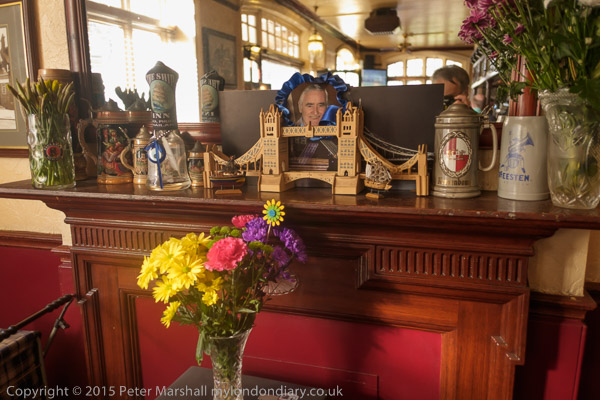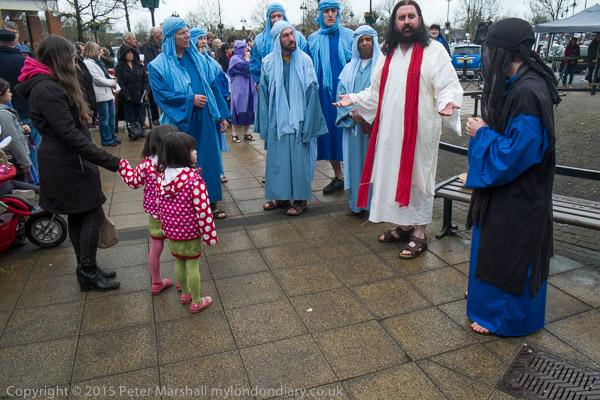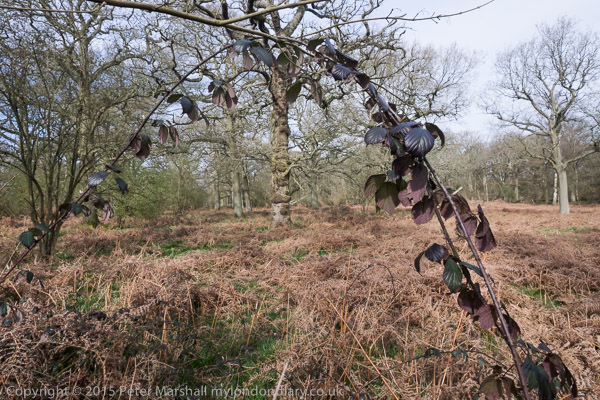
Fuji X-T1, 18mm (27mm eq)
Around Easter I’ve taken some time off from my normal work and have spent a lot of time using the Fuji X-Pro1 and Fuji X-T1 cameras, mainly with the 10-24mm zoom on the XT1 and the 18-55mm zoom on the X-Pro1, but also working with my favourite 18mm and the 35mm Fuji lenses. At times I carried around some others, but didn’t find the need to use them.
It’s taking me a long time to get used to some of the idiosyncracies of the Fuji cameras, probably much longer than if I just used one of them. If I had to pick one it would be the X-T1, largely for its far superior electronic viewfinder. Though I do like the optical viewfinder of the X-Pro1, I’ve often found myself switching to the electronic alternative, as the zoom lens blocks a significant part of the optical view. It works rather better with the smaller 18mm and 35mm primes, where only a small part of the view is blocked.
If these – and others in this focal length range – would satisfy all my photographic needs, I’d prefer the X-Pro1, but I like to have both a wider and a narrower view. With the 18-55mm, by the time the long end is reached, the viewfinder image with the optical viewfinder is just too small for my liking, making the electronic view a preferable option, and with the fine 14mm f2.8 too much of the image is hidden where the lens obtrudes into the optical viewfinder.
The X-Pro1 is a fine but very limited tool which does appeal to me as it feels a simpler camera to operate than the X-T1, but for me the flexibility of the latter is vital. For so many lenses it works better. Even with that 18mm, seeing the bottom right corner in the viewfinder is much better. And now I’m used to it, and don’t waste time searching throught the menus for it, I very much like having a dial on the camera top putting ISO at my fingertips. Being able to walk from dark interior to bright sun without having to fiddle with menus is great.
I find switching from using a camera with a direct vision optical viewfinder to an electronic viewfinder can be confusing. Using mainly DSLRs and the X-T1 it’s just too easy to get into the habit of thinking if the image is sharp in the viewfinder it will be in focus on the sensor – and I have made many, many exposures that prove it just ain’t so. The occasional arty blur might be of interest, but to find you’ve taken 50 in error because you forgot to change back from manual focus can be annoying. With the 18-55mm at its wide end, depth of field may be your friend and cover your stupidity, but it doesn’t work at 55mm.
Of course it should be obvious that you are still on manual focus – no little green rectangle confirming focus – but in the heat of the moment it can be so easy to forget this. And if you are not photographing in the heat of the moment, perhaps you should ask yourself why you are bothering to take pictures at all.
I think now that I have finally figured out most of my problems with Fuji colour in Lightroom. I’ve been using the X-Pro1 on and off for a couple of years and have always been surprised at how many people enthuse over Fuji’s colour rendition. Even though I think I’ve now discovered how to deal with it, I still often prefer Nikon colour.
The best result I’ve got with Lightroom come from changing the ‘Camera Calibration‘ from the normal ‘Adobe Standard‘ to the Fuji ‘Camera Pro Neg Std‘. It seems to give better colour than the camera Provia/Standard that I normally use for in-camera jpegs and the viewfinder/screen image (it seems wrong to use a different setting for camera and Lightroom, though the camera setting doesn’t affect the RAW file, but working this way seems to give me a better match between what I see in camera and the developed files.)
Setting up a development preset that applies this and uses Auto-tone produces images that need little adjustment – similar in that respect to my Nikon files, while with Adobe Standard they were a problem to deal with. Though there still seems to be an undesirable propensity for pink in Fuji’s auto white balance to correct. Lightroom’s Auto-tone perhaps works even more reliably than with the Nikon files, though this may be a reflection on the less challenging situations I’ve used the Fujis in.
I have a small issue over file sizes. Fuji’s similar quality to Nikon comes from files with a roughly similar number of pixels, but while the RAW files from the D700 average out at around 11Mb, the Fuji RAW files are roughly two or three times that size. The 16GB cards I now mainly use in camera get filled up rather fast, particularly on the X-T1, and I’ll probably buy larger ones; transfer times to the computer and into Lightroom are noticeably longer, and my external storage is filling up at a faster rate. Nikon’s compression with no real life noticeable quality loss is very useful.
Fuji battery life is a problem, even using mostly the optical finder on the X-Pro1. Nikon batteries hardly ever need changing during a day’s work. I carry spare batteries, but hardly ever need to use them, and have to remember to swap them over occasionally or the spare loses its charge over months. Working with the two Fuji cameras, at the moment I have a total of five batteries. Just enough to see me through a day of fairly light work, but I really need at least one more. Expense isn’t a problem, with replacement batteries being fairly cheap, but it’s a nuisance having to carry and to change them.
Overall I’m feeling rather frustrated with the Fujis. With the Nikons I can turn them on when I get the cameras out of the bag, and turn them on when I pack up. Between those times – often hours apart – every time I put my camera to my eye and press the shutter release, the camera takes a picture, almost every time in focus and with hardly any perceptible hesitation.
With both Fujis, things are rather different. Unless you are going to be taking pictures every few seconds, it’s quicker to switch the camera off, then turn it on when you want to use it again, waiting the roughly two seconds start up time, otherwise you can be pushing the button and swearing for even longer until the camera wakes up.
Focus, even with the improvements from firmware updates, still takes a noticeable time, but its the time taken to persuade the camera into life that is for me the real killer.
For some photography with wide-angle lenses in fast-moving situations you can of course do what we always used to do, turn off autofocus and rely on depth of field, using ‘zone focussing’. Once it’s up and running the X-Pro1 with the 18mm does the Leica thing rather better than the Leica M8 I used to use, and about as well as the real thing.

X-Pro1: 18mm, 18-55mm (27mm eq)
I have had some issues with framing using the 18-55mm with the optical finder of the X-Pro1, though these may well be down to me rather than the system. Certainly I seem to chop off the tops of people’s heads rather more than when working with the similar frame inside the view with the 18-105mm DX on the D800. And using the Fuji combination yesterday, at times the bright line frame was fading away as I was working, which was not good news. I fear an expensive repair may soon be needed.
So, much though I like the Fuji cameras, and much though I prefer to take them with me when I go out for a long walk or some relaxed occasion, they won’t be replacing the Nikons for much of my more intensive work. Perhaps I might just try working with a hybrid kit, with the X-T1 and 10-24mm replacing my ageing D700 and the superb but heavyweight Nikon 16-35mm. Perhaps. I’ll certainly give it a try before getting around to buying a D750.

Fuji X-T1, 10-24mm at 15mm (22mm eq)
For some photographs, that couple of seconds wait isn’t a problem, nor the slight pause you get between the shutter press and exposure. Some people wouldn’t even notice it, but when you are used to a camera without appreciable delay it annoys. Catching the moment is often vital in photography; catching the moment a little after just won’t do.
While in this post I’ve concentrated on some of the negative aspects, particularly for certain types of work, there are also some very positive aspects of the Fuji. Working in quiet environments, the quiet (or truly silent in electronic mode on the XT1) shutter is a great advantage, both to me as a photographer and in preventing annoyance to those you are photographing, and fast lenses such as the 35mm f1.4 combined with good high ISO performance are great in low light on the X-T1. I’ve often found myself while working wishing I had this camera in my hands instead of a rather clunky Nikon with a slowish zoom. The 23mm f1.4 is more expensive, and I’ve not yet bought one, but I’m tempted by this and the weather resistant 18-135mm …
______________________________________________________
My London Diary : Buildings of London : River Lea/Lee Valley : London’s Industrial Heritage
All photographs on this and my other sites, unless otherwise stated, are taken by and copyright of Peter Marshall, and are available for reproduction or can be bought as prints.
To order prints or reproduce images
________________________________________________________